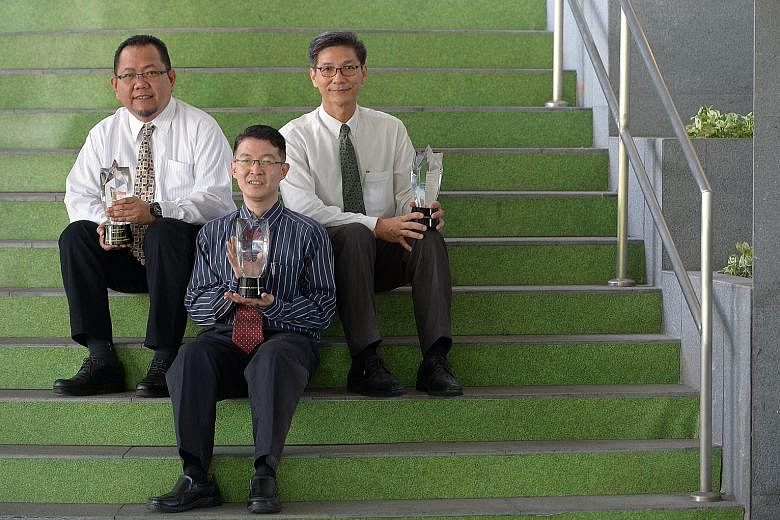At St Andrew's Junior College, the air-conditioning will not be left running if the last person to leave a lecture theatre forgets to switch it off.
In fact, the air-conditioning in lecture theatres and several classrooms in the school can be switched off by its operations manager without him leaving the office.
This is thanks to a mobile application developed by the school which can be used to switch the air-con off with a push of a button.
It is also synced to the school's booking system and switches the air-con off automatically when the room is supposed to be unoccupied.
This simple, yet effective, effort, combined with the replacement of more than 100 of the school's old air-con units with energy-efficient ones, has helped it reduce its annual electricity consumption by 12.1 per cent between 2013 and last year.
Yesterday, the school was among 17 organisations and individuals commended for their efforts to save energy at the sixth Energy Efficiency National Partnership Awards at the Devan Nair Institute for Employment and Employability in Jurong.
Other winners included electronics manufacturer Molex Singapore, which saved $1.29 million in annual energy usage due to energy-saving measures such as a system that can adjust the amount of energy supplied according to demand.
Mr Mohamed Shahril Jaffar, 47, of Panasonic Appliances Refrigeration Devices Singapore, won an award for being an outstanding energy manager.
He helped his company save 800 megawatt-hours of energy yearly, worth about $273,000, by making its compressed air system more efficient. Such a system is usually used in manufacturing for purposes such as cleaning chemical residues off finished products.
He also organises annual student visits for participants to learn about things like waste water treatment.
"Seeing how curious they are when they ask questions motivates me to continue pushing for greater energy efficiency," he said.
In his speech, Minister for the Environment and Water Resources Masagos Zulkifli noted that while 168 energy-intensive companies submitted energy efficiency improvement plans in 2014 and 2015, the actual improvement rate has so far fallen short of the target. The companies' targeted improvement rate was 0.76 per cent in 2014 but the actual rate was just 0.42 per cent.
"There is room to improve our energy efficiency collectively," he said, citing Belgium and the Netherlands, which achieve industrial energy efficiency improvement rates of 1 per cent to 2 per cent annually.
He said the National Environment Agency (NEA) has been consulting various industries - including the manufacturing and electronics sectors - about adopting enhanced energy management practices, including regular assessments to identify energy saving opportunities. NEA also plans to introduce minimum energy performance standards for common industrial equipment and systems like motors and cooling systems.

